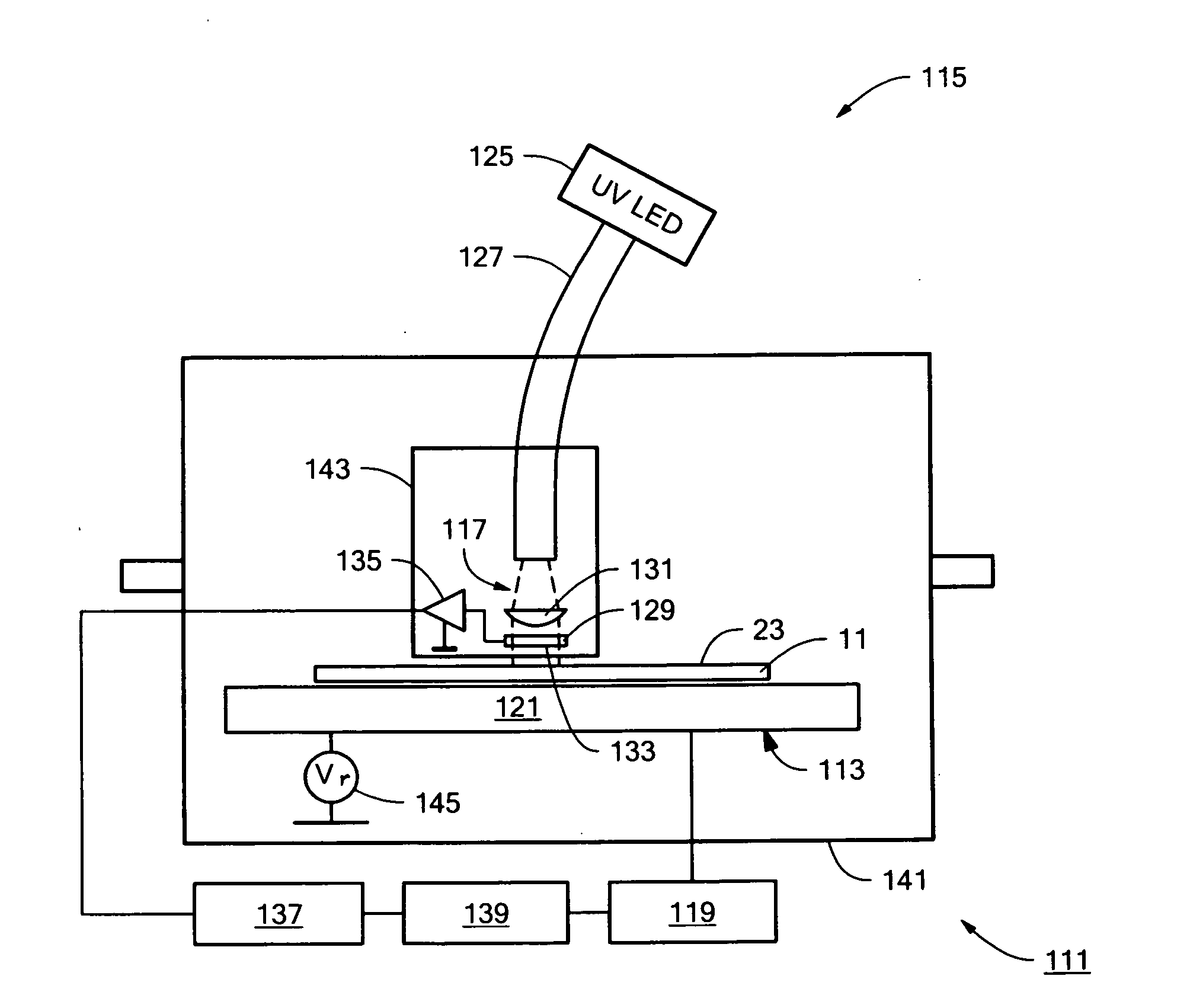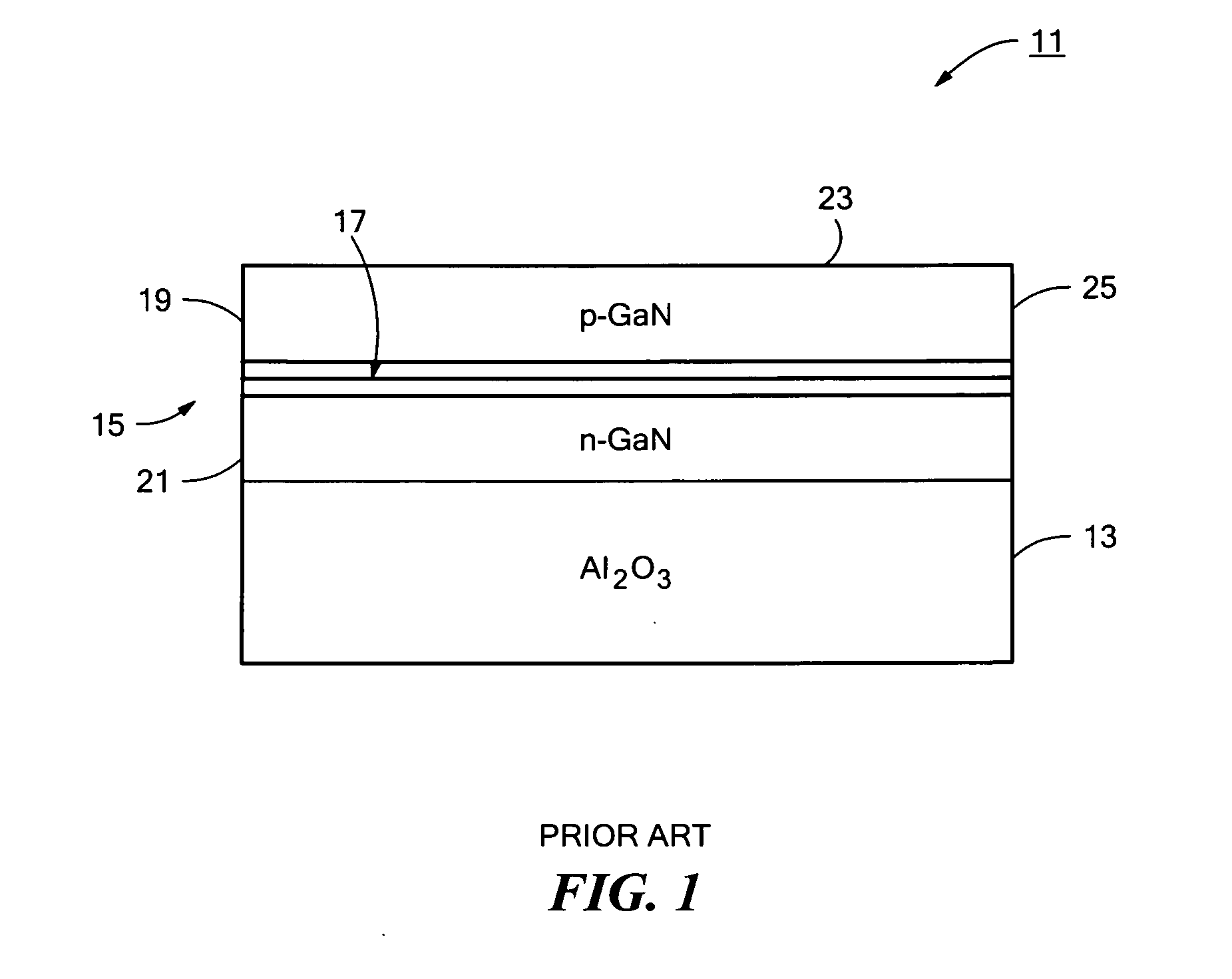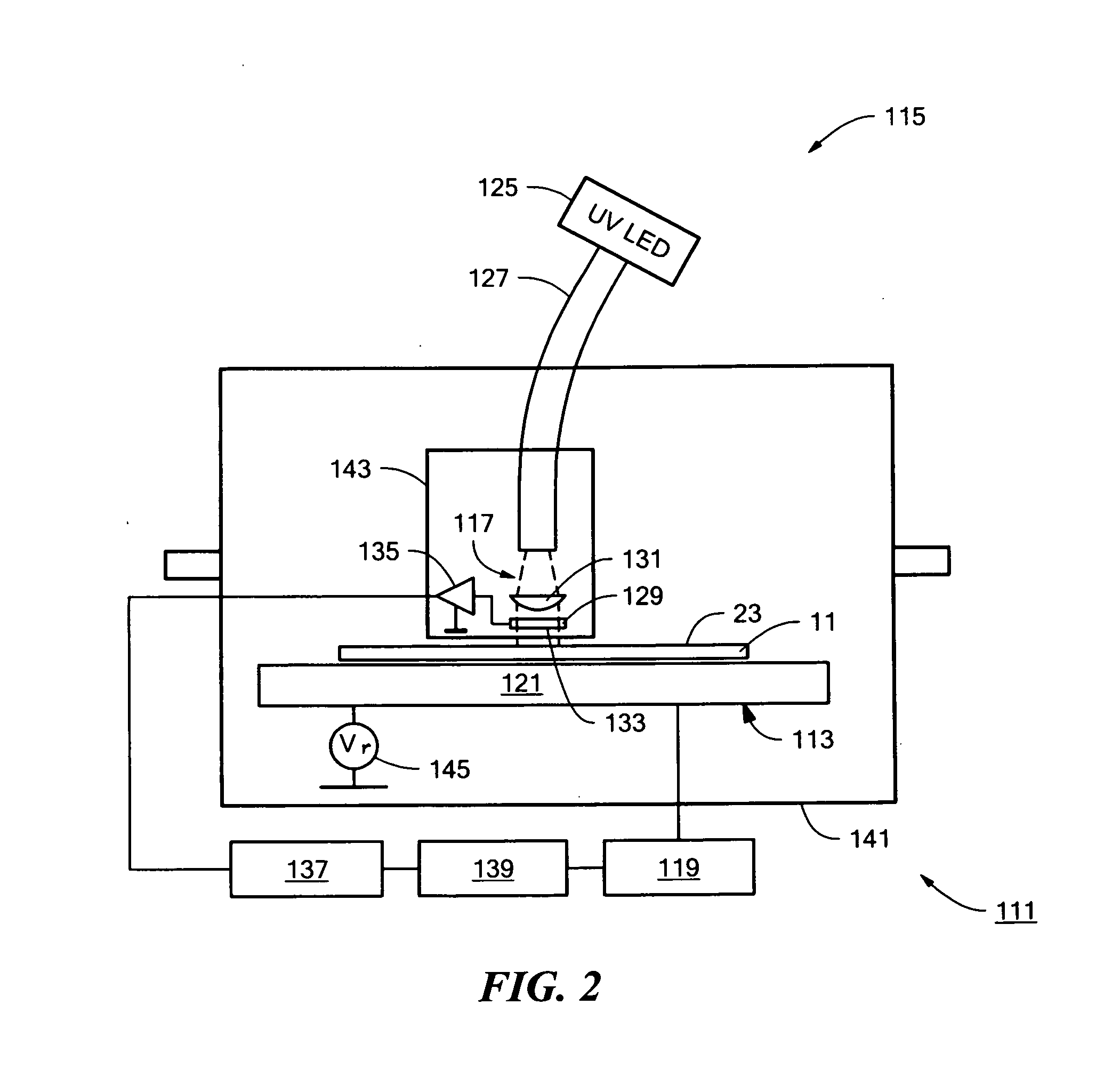System and method for characterizing the electrical properties of a semiconductor sample
a semiconductor and electrical property technology, applied in the field of semiconductor characterization, can solve the problems of p-type gan, mocvd, and doped with p-type materials such as magnesium, which suffer from a notable drawback, and degrade the electronic properties of p-type gan
- Summary
- Abstract
- Description
- Claims
- Application Information
AI Technical Summary
Benefits of technology
Problems solved by technology
Method used
Image
Examples
Embodiment Construction
Semiconductor Characterization System 111
[0032]Referring now to FIG. 2, there is shown a system for characterizing the electrical properties of a semiconductor wafer structure, the system being constructed according to the teachings of the present invention and identified generally by reference numeral 111. As will be described in detail below, system 111 is principally designed to apply novel in-line, non-contact surface photovoltage (SPV) techniques to semiconductor wafer structures with high surface state densities, which is a principal object of the present invention. Although conventional surface photovoltage techniques are not typically applied to semiconductor wafer structures with high surface state densities, such as GaN, due to the inherent electrostatic shielding of the interior of the top layer (e.g., the subsurface region 25 of top cladding layer 19) from the externally applied voltage or charge, it is to be understood that the system and method of the present invention...
PUM
 Login to View More
Login to View More Abstract
Description
Claims
Application Information
 Login to View More
Login to View More - R&D
- Intellectual Property
- Life Sciences
- Materials
- Tech Scout
- Unparalleled Data Quality
- Higher Quality Content
- 60% Fewer Hallucinations
Browse by: Latest US Patents, China's latest patents, Technical Efficacy Thesaurus, Application Domain, Technology Topic, Popular Technical Reports.
© 2025 PatSnap. All rights reserved.Legal|Privacy policy|Modern Slavery Act Transparency Statement|Sitemap|About US| Contact US: help@patsnap.com



